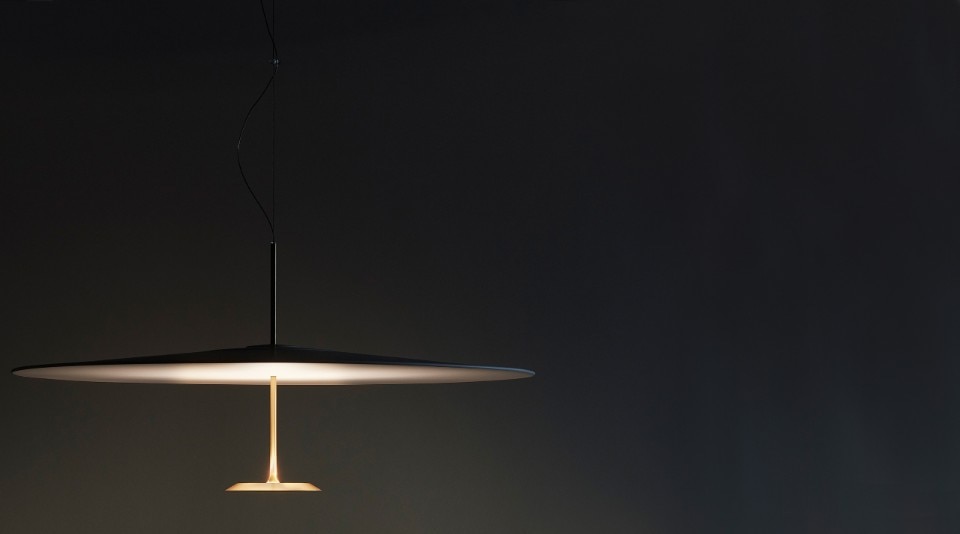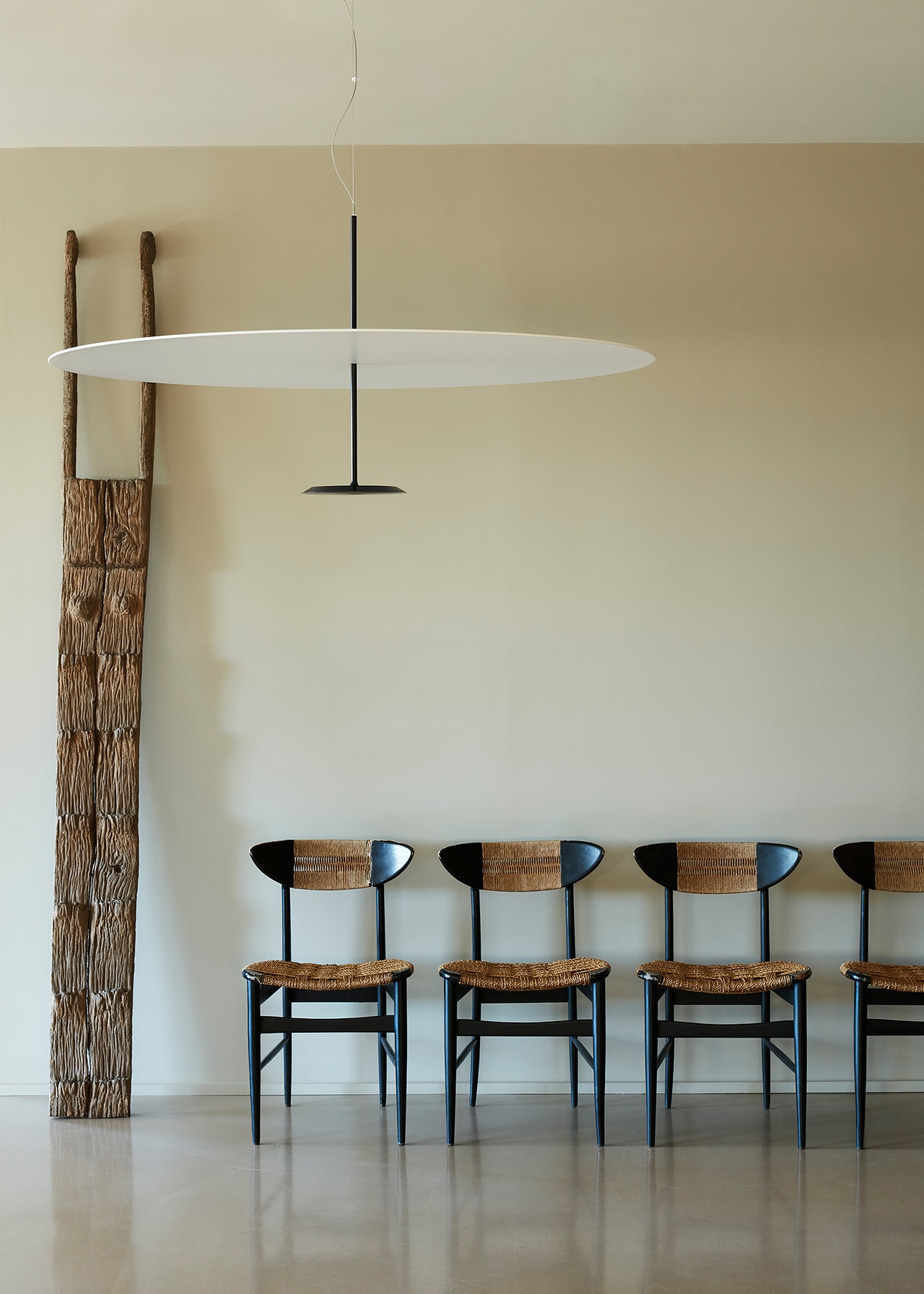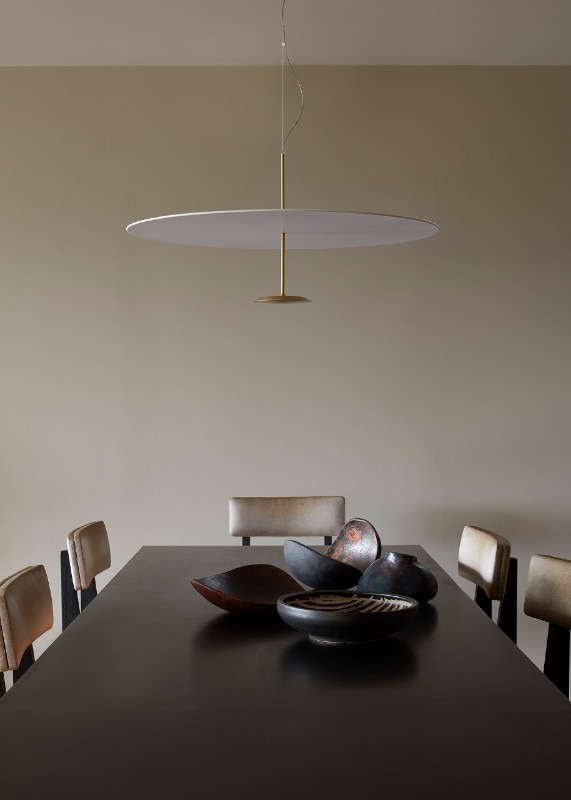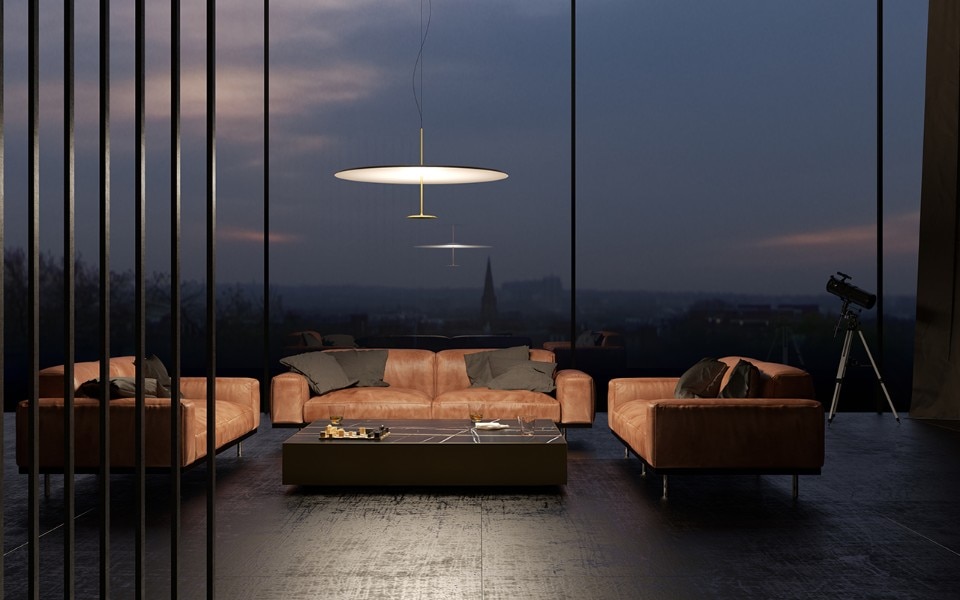An elementary composition – two discs connected by a thin metal tube – conceals the complexity of the lighting technologies adopted.
The work of London based Foster+Partners, founded in 1967 by Lord Norman Foster, covers all forms of design and an infinite number of disciplines. The architect, who was awarded the prestigious Pritzker Prize in 1999, combines form and technology to respond to the most varied design requirements: infrastructures, public buildings of various types, urban planning and industrial design.
Foster+Partners' vision perfectly matches that of Lumina, a lighting products company that stands out for its essential and innovative lamps. The English studio and the Italian company meet again to present DOT, a family of pendant lamps that combines the rigour of form with the most advanced lighting technology.
DOT is the result of the (apparently) elementary composition of two parallel discs of different sizes, which intersect a thin metal tube at the centre. The lower disc, which is smaller in size, is made of aluminium and conceals a ring of LEDs. The light is projected onto the upper disc, made of painted aluminium. When switched on, DOT appears as a thin, lightweight disc, floating in the air and generating an enveloping, shadow-free stream of light.
Behind the minimalist design lies a great deal of technological research, which involves resolving various production issues. For example, the high power of the source generates an amount of heat that the lower disc cannot dissipate on its own. The problem has been solved by inserting a special heat pipe, used in the aerospace industry, into the thin tube joining the discs.
The lamp is available in two finishes, black anodised and brass anodised, and three different diameters, corresponding to different wattages: ø60cm (23W), ø80cm (41W), ø110cm (55W).
- Product:
- DOT
- Designer:
- Foster + Partners
- Typology:
- pendant lamp
- Company:
- Lumina
- Website:
- www.lumina.it









